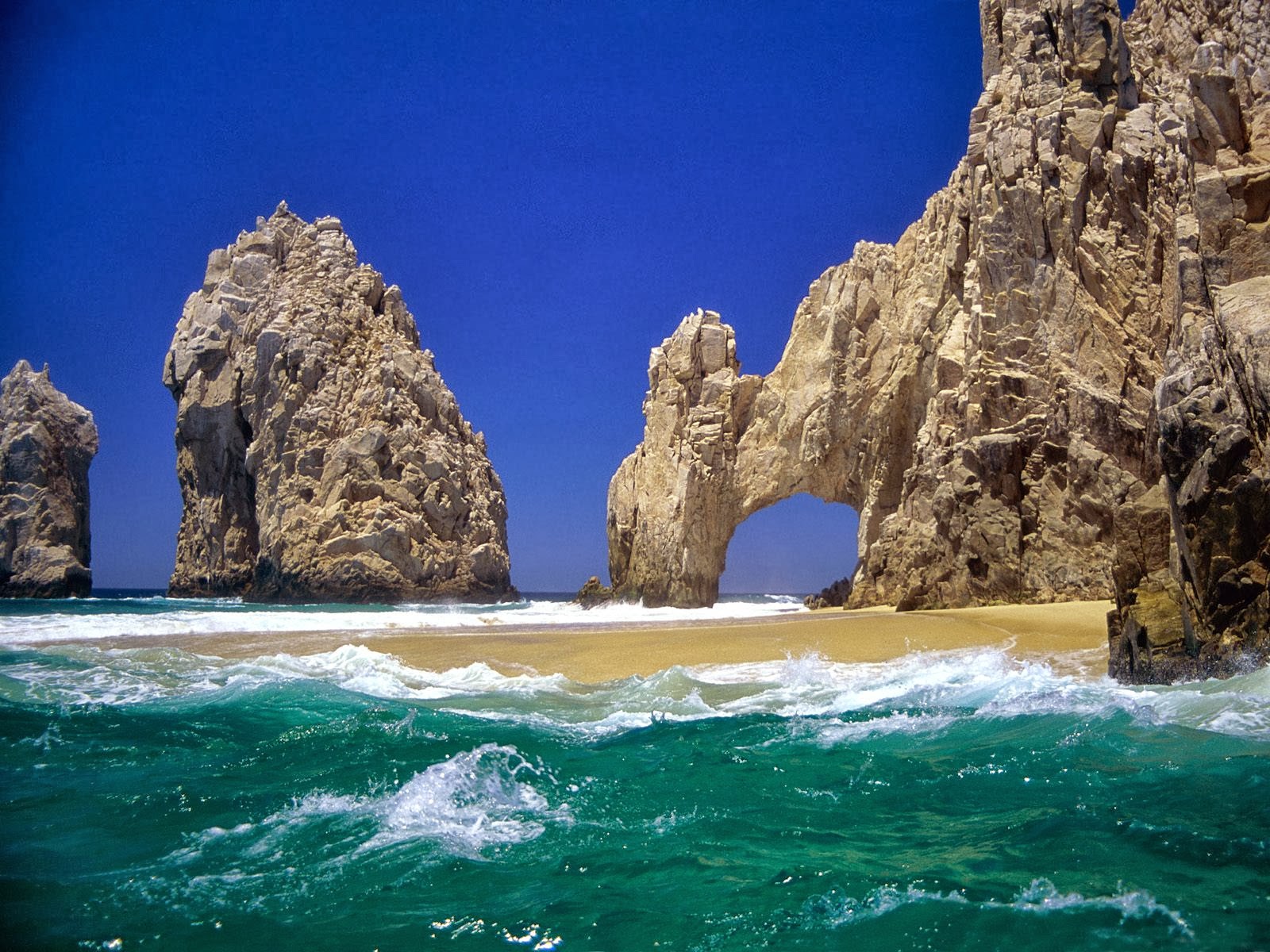Cabo San Lucas, commonly called Cabo, is a city at the southern tip of the Baja California peninsula, in the Mexican state of Baja California Sur. Cabo San Lucas together with San José Del Cabo is known as Los Cabos.Cabo has been rated as one of Mexico's top 5 tourist destinations it is known for its beaches, scuba diving locations, balnearios, the sea arch El Arco de Cabo San Lucas, and marine life. The Los Cabos Corridor has become a heavily-trafficked holiday destination for tourists, with numerous resorts and timeshares along the coast between Cabo San Lucas and San José del Cabo.Archaeological excavations have shown evidence of continual human habitation in the area for at least ten thousand years.When the first Europeans arrived, they encountered the Pericú people, who survived on a subsistence diet based on hunting and the gathering of seeds, roots, shellfish, and other marine resources. They called the location Yenecamú.According to the narrative of Hatsutaro, a Japanese castaway, in the book Kaigai Ibun, when he arrived at Cabo San Lucas in May 1842 there were only two houses and about twenty inhabitants. However, American authors such as Henry Edwards and John Ross Browne claim that Cabo San Lucas's founder was an Englishman named Thomas "Old Tom" Ritchie. John Ross Browne says Ritchie arrived there about 1828, while Edwards says that he died in October 1874.A fishing village began growing in the area when in 1917, an American company built a floating platform to catch tuna and ten years later founded Compañía de Productos Marinos S.A., the plant lasted several years in operation.Cabo San Lucas has become a prominent vacation and spa destination, with a variety of sites of interest and timeshares that have been built on the coast between San Lucas and San José del Cabo. It is sometimes considered the "Fort Lauderdale of Mexico." The distinctive El Arco de Cabo San Lucas is a local landmark.Cabo San Lucas has the highest paying marlin tournament in the world.In the winter, pods of whales can be observed in the area. They bear their calves in the warm waters of the Sea of Cortez after completing their six-thousand-mile migration from Alaska and Siberia.The beaches, surfing, and sport fish opportunities in Cabo San Lucas have attracted a great number of Mexican natives and foreigners to spend their vacations in large-scale tourist developments there. The development of Cabo's tourism industry was prompted by the Mexican government's development of infrastructure to turn Cabo San Lucas into a major center for tourism in Mexico, beginning in 1974. Upon completion of the Transpeninsular Highway, also known as the Mexican Federal Highway 1, tourist developments in Los Cabos often proceeded relatively unchecked.Until fairly recently,the unique and fragile environment of this part of Mexico was largely unprotected by law, and therefore was subjected to developers acting in concert with government agencies interested only in low-end tourist bonanzas. There is, however, a growing collection of activists and attorneys now involved in preserving many of Baja's desert habitats, marine mammals, and stretches of coastline. A number of agencies including the Gulf of California Conservation Fund and the Center for Environmental Law in La Paz are challenging the destruction of wetlands and other ecosystems from Los Cabos to Ensenada. In the face of a growing international public demand for corporate-driven ecological stewardship, higher-end resorts in the Los Cabos area are increasingly sensitive to their environmental impact, and are taking initial steps to institute sustainable practices such as reducing water usage and non-recyclable trash output
Source:
Picture:Link:
Wikipedeia:Link:

0 comments:
Post a Comment